|
|
Post by Bonobo on Jan 28, 2008 10:03:51 GMT 1
Wrocław before the war 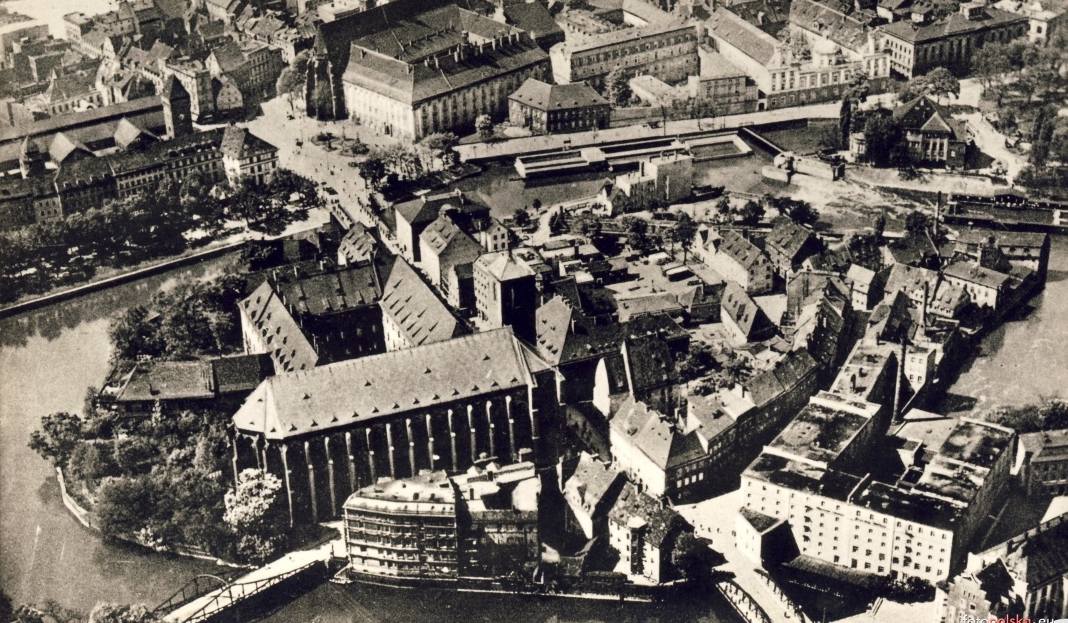 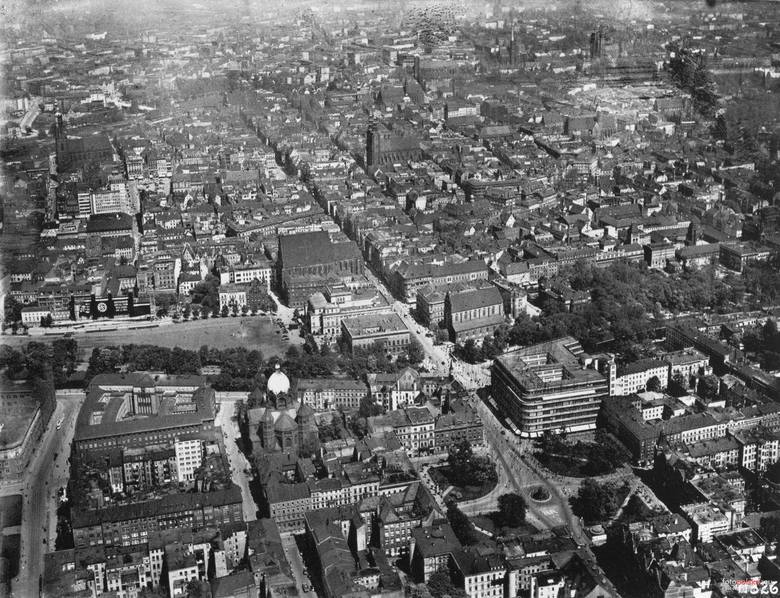 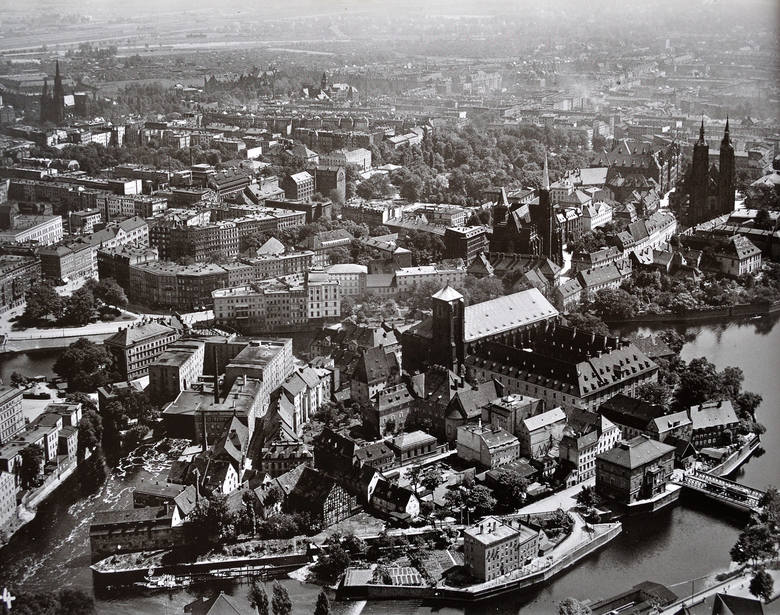 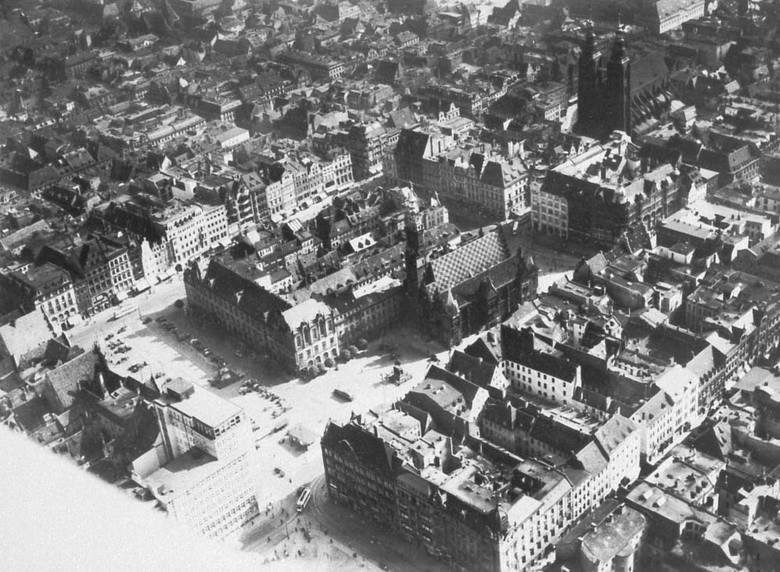 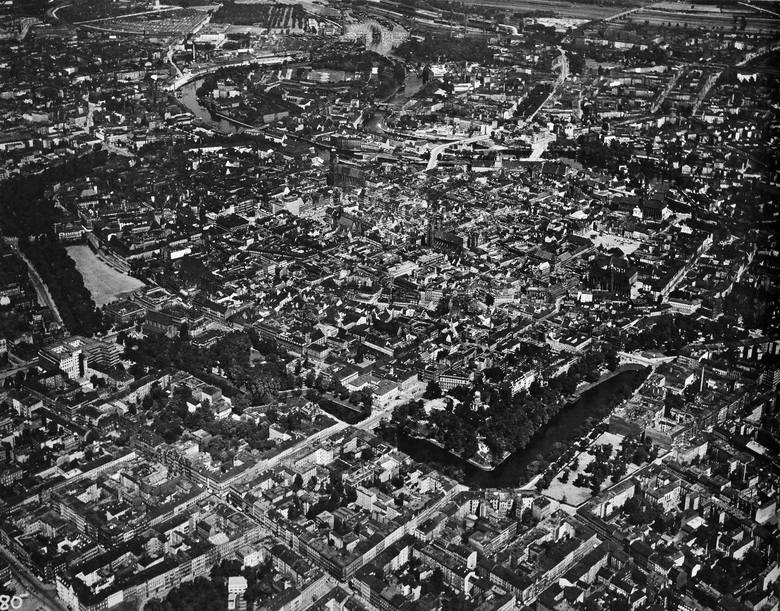  ![]()  ![]() 
WW2
In 1945 Germans decided to defend Wroclaw against the Red Army at all cost. 700.000 civilians were evacuated but only 30% survived deadly marches eastwards in harsh winter conditions and the allied bombardment of Drezno later on. The civilians who remained in the city joined defence units. Even children were drafted and fought. The relentless siege lasted 80 days. The city was completely ruined. 80.000 German civilians died, including 3000 suicide cases.
 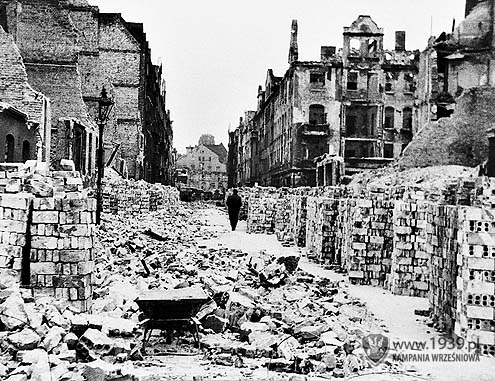 |
|
|
|
Post by Bonobo on Nov 8, 2009 23:01:28 GMT 1
Wroclaw, Poland's ghost town
From shadowy courtyards to bars and restaurants frequented by ghosts, a spine-chilling atmosphere permeates every corner of Wroclaw, Poland's spookiest city
Alex Webber
The Guardian
Saturday 31 October 2009
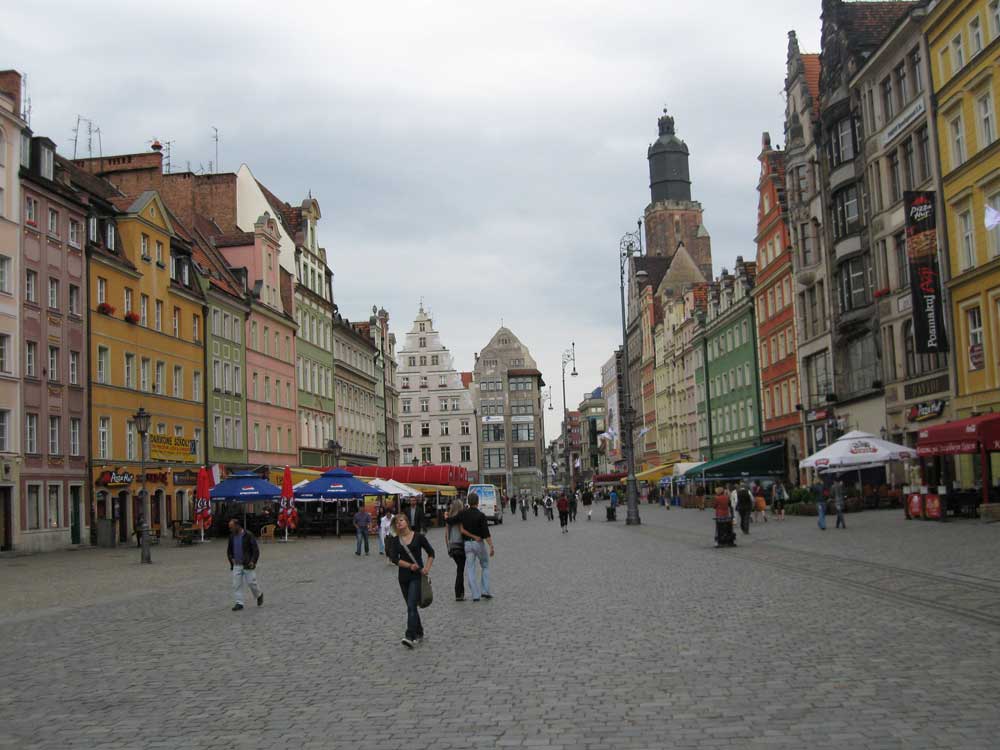
Favourite haunts ... the Rynek, Wroclaw's medieval main square
For centuries, Poland was a military crossroads between east and west Europe, a battleground coveted by her neighbours. It's a legacy that has left the country steeped in legend and lore, ghosts and spooks – and nowhere more so than Wroclaw, a city that at one time or another in the last millennium was part of Poland, Bohemia, Austria, Prussia, and Germany. It's nine years since I came to live in Poland, and in that time I've stayed in scary Reszel Castle, haunted by the last woman in Europe to be torched for witchcraft, as well as the medieval-themed Torture Room of Lagów Castle. But these don't even come close to Wroclaw, a city whose labyrinthine streets and shadowy courtyards, shrouded in Frankenstein- esque fog, could have been built with a Hammer horror set in mind.
On my latest trip I visited its most haunting spot, the city's Jewish cemetery, an overgrown remnant of a culture all but extinguished here some 60 to 70 years ago. Walking on soggy autumnal ground, I zigzagged through sunken graves, the stones twisted to angles long since set by wind and earth. A cat, not used to visitors, eyed me with suspicion. In the distance a couple of figures huddled over a crooked tombstone. Grave diggers? Body snatchers? Neither. Tourists, and – as it turned out – the only ones I'd see pretty much all weekend.
Much of Wroclaw – pronounced "rock-law" by Brits, "rot-slav" by the locals – disappeared under Soviet shellfire in 1945, and the medieval city I see is a perfect imitation, meticulously rebuilt from the ruins. Not that I could tell. Cobbled alleys curved and then disappeared into a shivery October mist; the historic centre is strangled by a tangle of rivers and canals. I checked into the Monopol, a 19th-century creation reinvented as a design hotel, just moments from the Rynek, the city's main square.
No matter how many times I see it, the Rynek always takes my breath away. In the middle lies the town hall, a 13th-century building whose roof bristles with spires and gargoyles, while a collection of gabled burgher houses, richly decorated with intricate patterns, frame the square. Housed in one such building, the Dwór Polski Hotel (Kielbasnicza 2, dworpolski.wroclaw. pl), is an antique venue whose gloomy corridors come lined with stuffed falcons and suits of armour. The chills of the past seemed to follow me as I creaked around under the watchful gaze of the portraits. One of them, King Zygmunt III, used an apartment here as his base while secretly courting Anna Habsburg.
Back outside, muffled against the first frosts, I approached the Hansel and Gretel building, two skinny tenement houses linked together by an overhanging archway symbolic of a couple holding hands. Some say this is Wroclaw's most romantic building, but the Latin motto on the archway tells a different story: "Death is the gate to life." Indeed, this was once the setting of a murder most horrid. Possessed by a demonic dwarf who resided in the nearby St Elizabeth's church, an errant grandson butchered his grandmother in a devilish frenzy. According to some, her shrieks can still be heard.
Unconvinced, I made steps to ghostly target number two, the House Under the Golden Dog (Rynek 4) now a touristy restaurant filled with steps and shadows. Frederick the Great once stayed here – and, for him, once was enough. While he was penning a letter a phantom force seized the quill from his hand, throwing the monarch to the ground. Today it's said that visitors can hear mysterious sounds coming from the cellars. All I could hear, however, was the distant din of a crowded pub.
Wroclaw is, to all intents and purposes, a student city, and a lively nightlife comes as part of the package. I headed to Pracoffnia, a cellar bar with a portcullis over the courtyard entrance. Formerly a medieval prison, the candlelit confines are now populated by a polo neck-wearing crowd perched on thrift-store furniture, downing vodka shots. But, the toilet aside, there were no alarming surprises, so I went back into the night, past the church of St Mary Magdalene, a Gothic glory with a 45m-high bridge connecting its twin towers. The shadows that swirl below are said to be those of local maids doomed to eternity.
When the Red Army laid siege to Wroclaw in 1945, the Nazi high command turned the city into a fortress, using the Gothic torture chambers under Partisan Hill as their headquarters. Screams are said to haunt the corridors, although the only ones I heard emanated from the blondes who now use the spot for clubbing. Prowokacja, it's called, and you need plenty of bling to get in. Instead, I got my ghoulish kicks in Abrams' Tower, a bar in a medieval fortification on the fringe of the old town with dim lighting and arty prints on the bare brick walls. Over wine, I chatted with the Californian owner, Frederick, an artist turned restaurateur. "I'm convinced this place is haunted," he said. "The ghost is known to the old regulars, back when this place was decorated with lots of antique sewing machines. One night all the pedals and wheels on the machines started whirring and spinning on their own." Just as he finished his sentence, a picture clinging to the wall thumped to the ground. Spooked? You bet.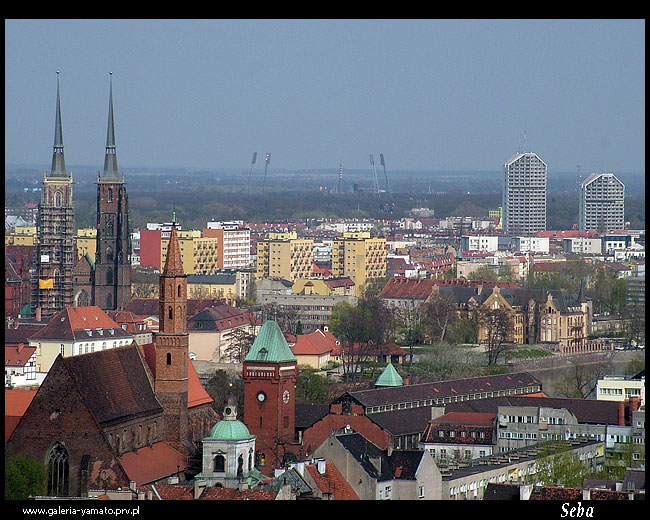  
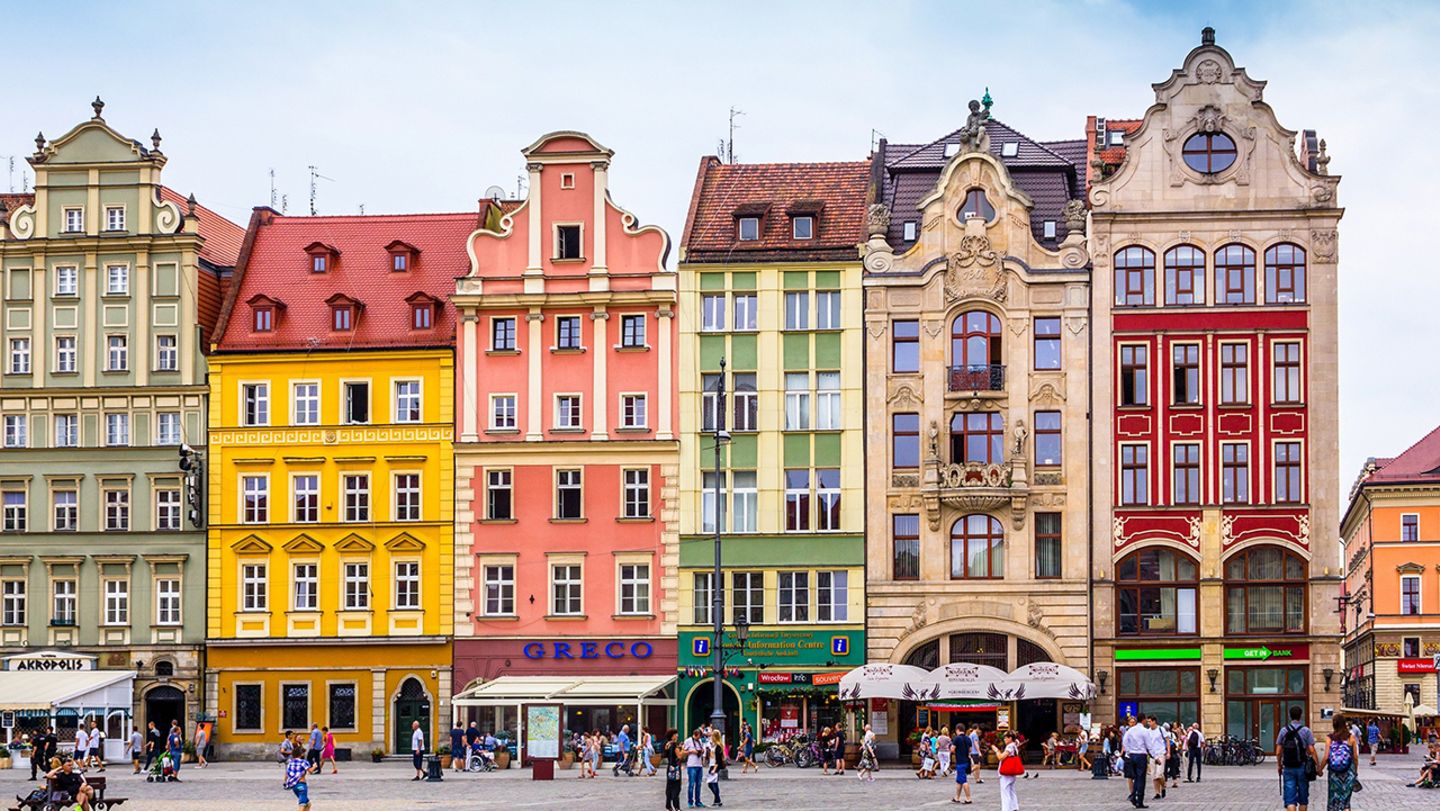  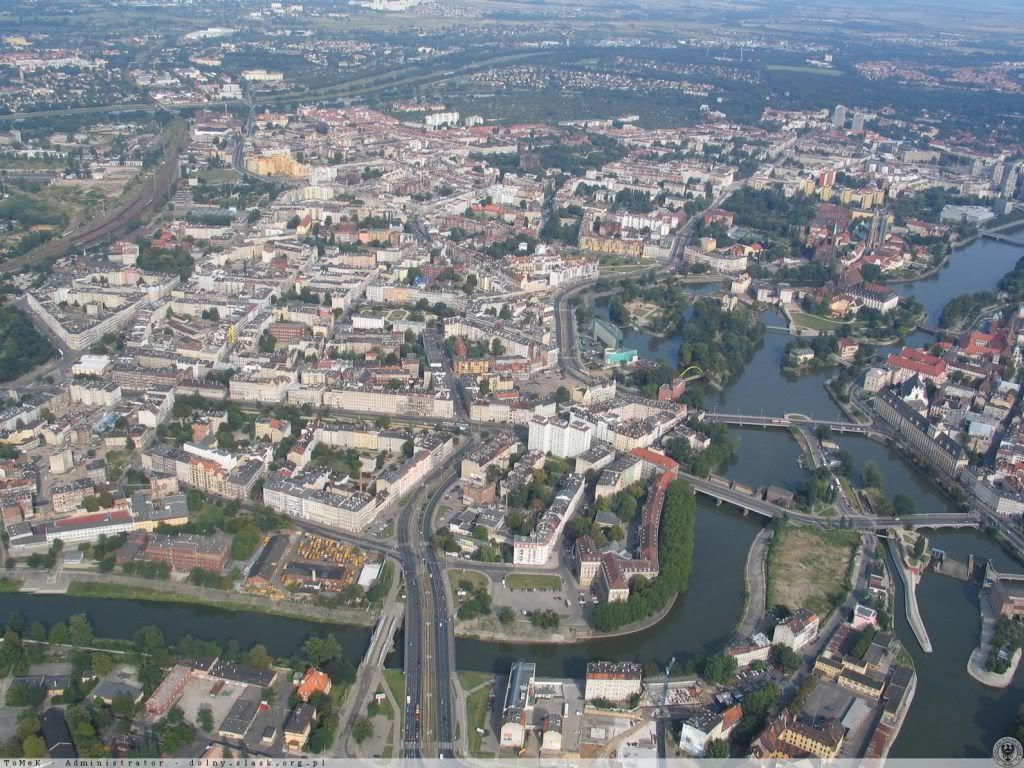 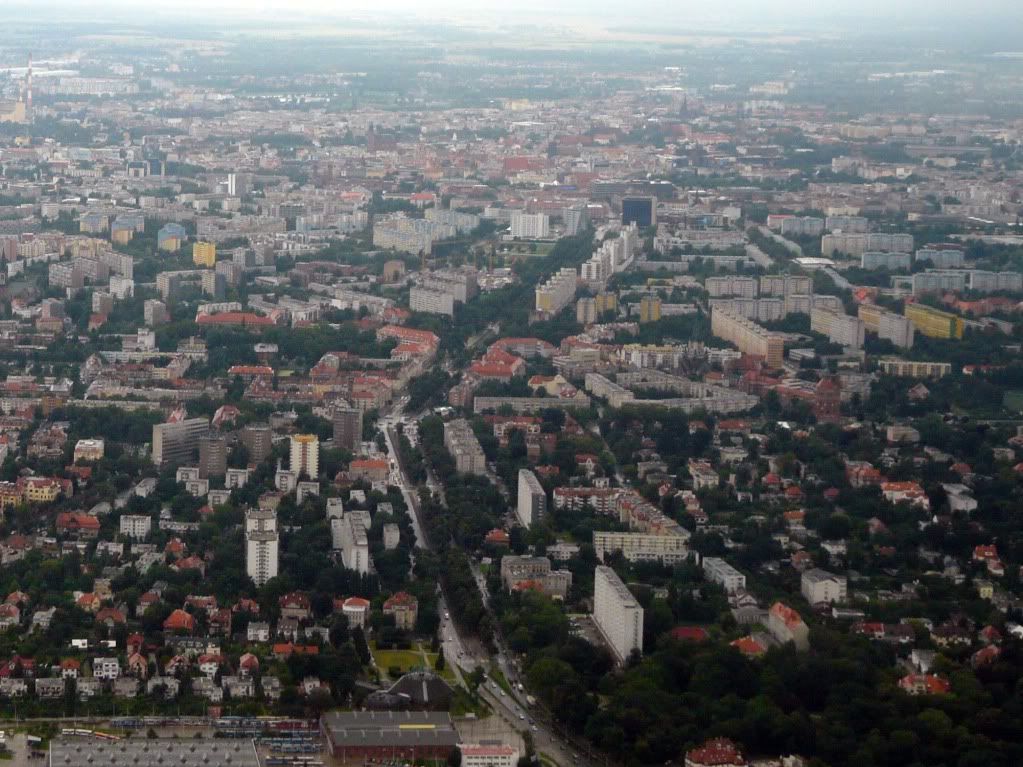 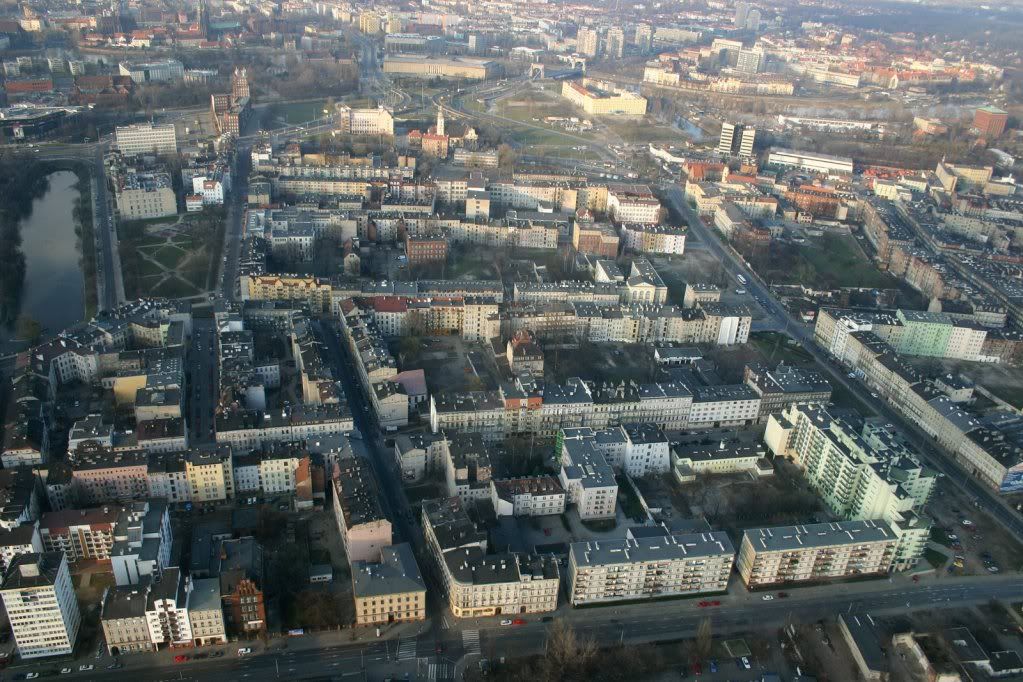 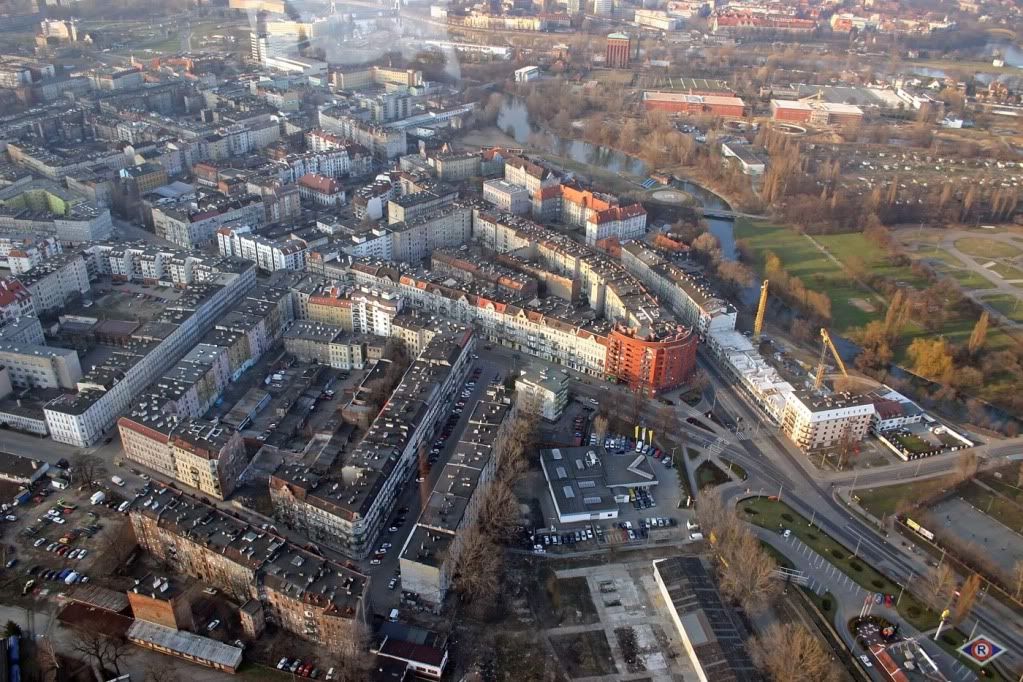 i682.photobucket.com/albums/vv185/luzwalker/40452.jpg?t=1249505756 i682.photobucket.com/albums/vv185/luzwalker/40452.jpg?t=1249505756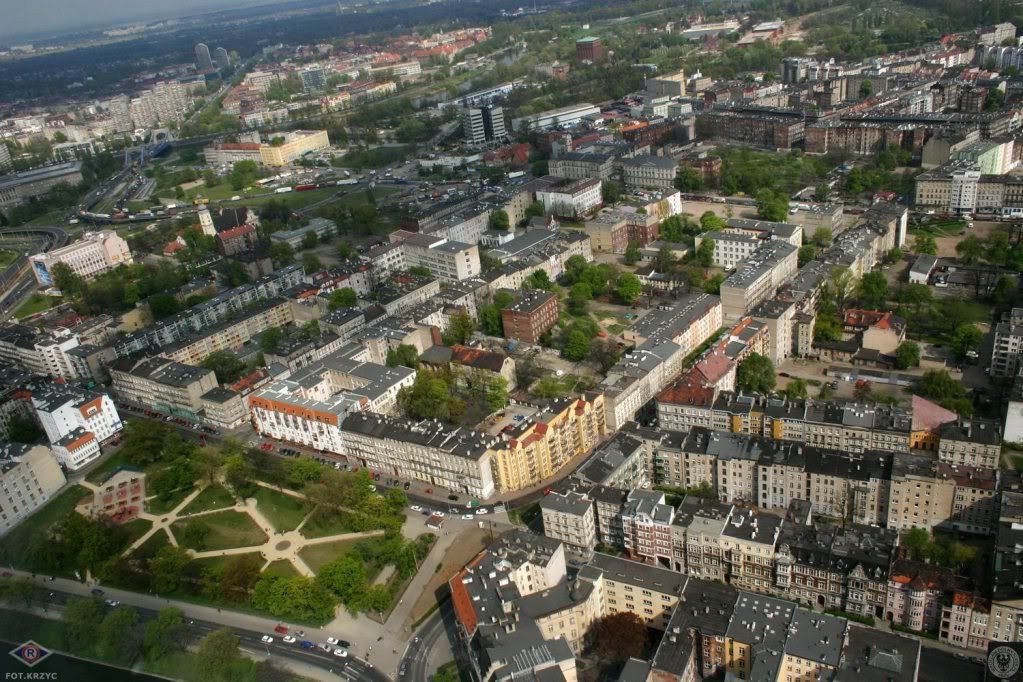
|
|
|
|
Post by valpomike on Nov 9, 2009 2:00:19 GMT 1
Most of adult people don't believe in ghost, they are just the stories, are used to sell things, and bring people in only.
Mike
|
|
|
|
Post by Bonobo on Dec 30, 2010 15:16:00 GMT 1
Wroclaw gets to bottom of cold snap
27.12.2010 14:29
Poland’s first heated benches have been placed in front of Wroclaw city hall in the south west - a perfect addition to the street furniture if you fancy a quick sit-down in zero degree temperatures.
The five heated benches are part of a project sponsored by a Finnish power company and under the patronage of Wroclaw local authorities.
The idea originates in Sweden, where the same company held a campaign in which Stockholm residents decided which parts of the city needed additional lighting.
Wrocław’s heated benches have been manufactured from 100 percent recyclable aluminium and equipped with warming LED lighting, which have a low energy consumption rate.
Designers of the benches say that each needs four times less energy than one made of iron.
The seats, which can be heated to up to 20 deg.C, are also furnished with special thermostats, adapting temperature to conditions and time of day.
Another four benches will be mounted before the end of the year in places decided by a poll carried out among Wrocław residents.
|
|
|
|
Post by valpomike on Dec 30, 2010 18:28:53 GMT 1
I wish we had some here, in the USA, but as of now, I don't think we have any.
Mike
|
|
|
|
Post by Bonobo on Feb 23, 2013 0:13:53 GMT 1
|
|
|
|
Post by pjotr on Feb 24, 2013 0:59:41 GMT 1
Very nice images of Wrocław Bo, I like them very much!
|
|
|
|
Post by pjotr on Feb 26, 2013 12:28:11 GMT 1
Does Wrocław also have a new town or a business district like Warsaw or Amsterdam?
|
|
|
|
Post by Bonobo on Feb 26, 2013 20:43:23 GMT 1
Back to WrocławDoes it also have a new town or a business district like Warsaw or Amsterdam? I am afraid Warsaw is the only city in Poland to develop new business districts. Other cities are too seriously indebted, e.g., due to EURO 2012 costs. |
|
|
|
Post by pjotr on Feb 27, 2013 0:03:08 GMT 1
Bo,
I think that every city has to find it's own niche, speciality, strength, economical core and goal. Wrocław is both interesting for other Poles to do business with and as a touristic destination, and in the same time an interesting destination for the neighbouring Czechs and Germans, due to it's German and Bohemian roots and attractiveness as a city.
Economy
Wroclaw is the second after Warsaw in terms of revenue (3.814 billion zł in 2012) and expenses (3.804 billion zł in 2012) budget in Poland. Income per capita is also second only to Warsaw.
In Wrocław manufactured buses, trams, railroad cars, home appliance, chemicals and electronics. Their factories and development centers have much foreign corporations, such as WAGO ELWAG, Siemens, Nokia Siemens Networks, Volvo, HP, IBM, Google, Opera Software, QAD, Bombardier Transportation, DeLaval, Whirlpool Corporation, Bosch, WABCO, f*gorMastercook, Tieto, PPG Deco Poland and others. In Wroclaw, the offices are located in major Polish companies, including Getin Holding, Akwawit-Polmos Wrocław, Telefonia Dialog, Gazoprojekt, MCI Management, Protram, Selena, Koelner, AB SA, Impel, Kogeneracja SA, EKO Holding.
Since the beginning of the 21st century, the city has had a developing high-tech sector.
In Wrocław Technology Park there are many hign-tech companies: Baluff, CIT Engineering, Caisson Elektronik, ContiTech, Ericsson, Innovative Software Technologies, IT-MED, Mitsubishi Electric, Maas, IT Sector, Technology Transfer Agency Techtra, Vratis, PGS Software and IBM. In Biskupice Podgórne (Community Kobierzyce) there are factories of LG (LG Display, LG Electronics, LG Chem, LG Innotek,) Dong Seo Display, Dong Yang Electronics, Toshiba, and many other companies, mainly in the electronics and home appliances.
Have their headquarters here, the following banks: Crédit Agricole Bank of Poland, Bank Zachodni WBK, Euro Bank, Santander Consumer Bank as well as financial and accounting centers: Volvo, Hewlett-Packard, KPIT Cummins, UPS, GE Money Bank, Credit Suisse. The city is home to the largest number of leasing companies and debt collection in the country, including the largest European Leasing Fund, there is also a headquarters of AmRest, a franchisee network of KFC, Pizza Hut, Burger King and Starbucks. Wrocław is a major center for the pharmaceutical industry: U.S. Pharmacia, Hasco-Lek, Galena, 3M, Labor, S-Lab, Herbapol, Cezal.
In February 2013 airlines Qatar Airways launched in Wrocław European Customer Service.
Nearby Wrocław are Bielany Retail Park and Bielany Trade Center, located in Bielany Wrocławskie.
Due to the proximity to the border with Germany and the Czech Republic share of Wrocław and the region of Lower Silesia in exports and imports of these countries is very high.
As of the end of 2010, Wrocław enjoyed a low unemployment level - 6.1%.
|
|
|
|
Post by pjotr on Feb 27, 2013 0:14:28 GMT 1
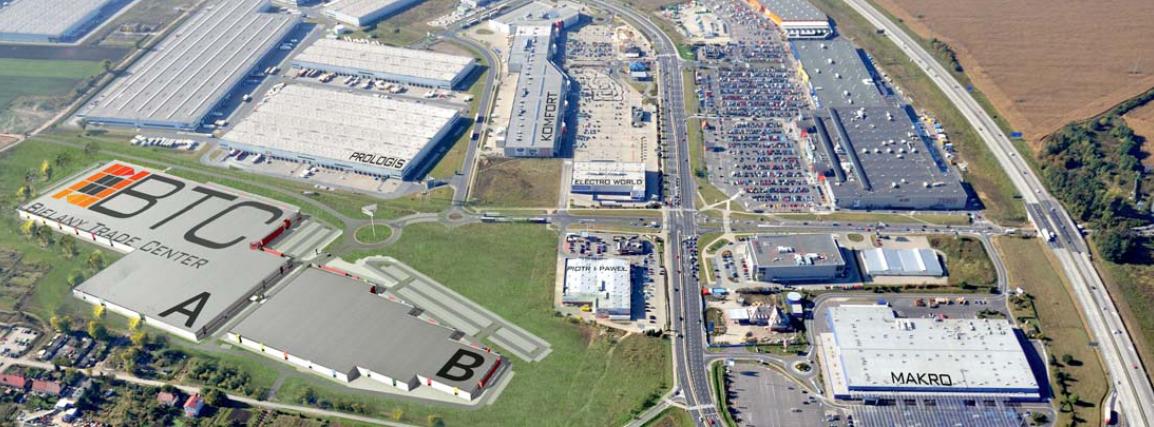  Ofcourse this looks the same as similar places in the Netherlands, Germany, the USA and probably Warsaw, Krakow and Poznan. But this is a start from which a vibrant business centre in the periphery of Wrocław can be developed and built. I am really impressed and amazed with the Wrocław economy. It's advanced stage, it's modernism, it's innovative spirit and core and it's diversity. Next to that I think that Wrocław has a great future as Commercial, touristic and cultural city. There maybe are also possibilities to develop commercial, trade and service sector facilities next to Wrocław – Copernicus Airport. A good example for that Airport could be Schiphol Airport next to Amsterdam. That is not only an Airport, but also a shopping area, a horeca area and congress area. It is good to read about Wrocław – Copernicus Airport, that car parking will be expanded to 1,000 spaces, and a conference centre with a hotel will be built on site. That's a good start. en.wikipedia.org/wiki/Copernicus_Airport_WrocławMany people love the Cosmopolitan atmosphere of Schiphol and it's exellent shopping mall with Fashion boutiques, restaurants, bars, liquor stores, electronic shops, shoe stores, supermarkets, business clubs, hotels, company warehouses, a business distric nearby (Amsterdam and Hoofddorp). Hoofddorp a small town nearby grew rapidly die to Schiphol, although Schiphol blocked it's expansion to the East, due to the Sounds of the airtraffic in that direction. pl.wikipedia.org/wiki/HoofddorpI am sure that Wrocław – Copernicus Airport will develop in the same direction. |
|
|
|
Post by Bonobo on May 29, 2016 20:25:33 GMT 1
The reconstruction process didn`t cover all the damage. See the difference:   |
|
|
|
Post by Bonobo on Jul 5, 2018 19:15:05 GMT 1
More pics showing the war destruction and the reconstruction process on this site wroclaw.wyborcza.pl/wroclaw/56,35771,23340494,80-dni-ktore-zabily-miasto,,1.html E.g.,    |
|
|
|
Post by Bonobo on Dec 25, 2020 12:41:47 GMT 1
|
|
|
|
Post by Bonobo on Dec 5, 2021 7:54:46 GMT 1
|
|
|
|
Post by Bonobo on Dec 23, 2021 12:31:42 GMT 1
Interesting article - see it for more photos: www.onet.pl/turystyka/onetpodroze/zniszczenia-wojenne-wroclawia-i-odbudowa-miasta/zjcxr89,07640b54
ONET TRAVEL INTERESTING
Who destroyed Wrocław the most?
Wrocław is a city of three nations. It belonged to the Czechs for the longest time, about 400 years under Polish rule. The Germans managed it for the shortest time, but they had a decisive influence on the architectural shape of the city. Unfortunately, after World War II, the city was in a deplorable condition.
Marcin Gonera
December 15, 2021, 11:48
The fanatical defense of Wrocław during the war resulted in the destruction of 65 percent. cities and death of about 100,000 people
Wrocław was destroyed by the Soviets twice: during the attack on the city, but also after the victory, when there was no longer any rational reason
Many buildings were demolished by the Germans themselves during the siege. They didn't even spare their churches and cemeteries
Due to looting, crime and uncertainty whether the city would remain in Polish hands, Wrocław was called "the capital of the Polish wild west"
More such topics can be found on the main page of Onet.pl
Wrocław was the longest defending German city at the end of World War II. Berlin surrendered on May 2, 1945, and Wrocław announced its capitulation only on May 6. The effect of the fierce, even desperate defense of Wrocław was the destruction of the city in 65%. and death of about 100,000 people . It was a fanatical defense of the city, which had been faithful to him from the beginning of Hitler's rise to power. In the 1933 elections, Breslau was the city where the Nazis won an absolute majority, gaining 50 percent. votes.
Escape of the Germans
The siege of Wrocław, which lasted from February 13 to May 6, 1945, was a very difficult period for the inhabitants. The city was proclaimed Festung Breslau (Fortress of Breslau), even though its fortifications did not provide a real basis for the city to be a fortress. Valuable information on the defense of Wrocław is provided by the notes of Fr. Paul Peikert - pastor of the parish of St. Maurice, a critique of Nazism. His "Chronicle of the days of the siege" allows you to feel the atmosphere of the end of the war and see the battle for Wrocław through the eyes of the Germans living there.
Fr. Even before World War II broke out, Peikert was a brave critic of Nazism, for which he faced punishments and imprisonment. In 1937, he was arrested for three months for acting against the Nazi party. At the beginning of the siege of Wrocław, he wrote in private records that the Nazis had brought poverty to the country. Interestingly, even before the Russians entered Wrocław, he wrote that one should not be afraid of the Russians' revenge, because it was the Germans who committed the greater crimes. "There may be isolated incidents of barbaric offenses by the Russians, but let's think about what our Waffen-SS and Gestapo did to the attacked nations (...). Let us mention the mass murder of the Jewish population of all countries." the clergyman wrote. Unfortunately, Fr. Peikert that the Russians would behave decently after the capitulation of Wrocław turned out to be in vain.
See also: A city destroyed like Warsaw. What do you know about non-existent monuments in Wrocław? [QUIZ]
After the first Soviet air raids, the flight of civilians began. It was January then, 18 degrees Celsius. Many people died of hunger, frost and exhaustion. However, not all Germans fled, many civilians remained in the city, and of course people prepared to defend Wrocław at the cost of their lives. There were about 40,000 soldiers defending the city, but it was not a regular army, but a jumble of various units, fanatical members of the Hitler Youth and the Volkssturm - a makeshift army of civilians who had only undergone a short training.
Who destroyed Wrocław?
Wrocław was destroyed by the Soviets twice: during an attack on the city, especially through air raids, and after the victory, when the city had already been conquered and there was no rational reason for its destruction. Interestingly, many buildings were also demolished by the Germans during the siege. The Germans blew up tenement houses so that German troops could dig in and repel Soviet attacks.
Fr. Peikert describes in his chronicle a meeting with his parishioner who took part in blowing up houses: "He said that the summer mansions of wealthy people were full of valuable equipment: furniture, linen, clothes and family valuables. only what is necessary. With everything inside, the house is blown up and everything disappears under a great mountain of rubble. "
Also, many historic churches in Wrocław were converted into strongholds. The Germans did not even spare cemeteries, using the tombstones of their relatives to build barricades. A huge undertaking bordering on madness was the decision to build an airport in the city center, in the place of today's Grunwaldzki Square. This place looked completely different than today. It was full of tenement houses, there were also several university and state buildings as well as churches. All of this was razed to the ground by the forced inhabitants. Several thousand civilians died during the construction of the airport, as this place was particularly vulnerable to attacks by the Soviets. After the airport was built, it turned out to be completely unnecessary. There were rumors that the airport was actually only used once:
The first days of "freedom"
On May 6, 1945, the command of Wrocław surrendered, giving the city over to the Russians. However, this did not mean the end of the ordeal. As Norman Davies writes, "the thesis that Breslau was completely destroyed during the siege was a post-war fiction" ("Microcosm. Portrait of a Central European City"). The Russians continued the barbaric act of destroying the city, setting whole neighborhoods on fire and blowing up buildings that had partially survived. And so, four days after the capitulation, part of the collections of the University Library burned down, and a few days later, the explosion destroyed the tower of St. Mary Magdalene and the famous Bridge of Witches.
The Russians also began a large-scale plunder of the city. They exported factory equipment, tools, household appliances, furniture, railroad tracks, and works of art. Living in Wrocław for many months after the war was very difficult, much more so than in other parts of the new Poland. The reason was not only the enormous destruction and chaos, but also because it was still a city mostly inhabited by Germans.
In December 1945, 33 thousand people lived in Wrocław. Poles, and Germans over 160,000. In 1947, however, the demographics of Wrocław looked completely different: almost 200,000. Poles (mainly the so-called repatriates from the East) and 17 thousand. Germans. Due to the spread of looting, a large number of crimes, and apathy caused by the uncertainty whether the city would remain in Polish hands, Wrocław was called "the capital of the Polish wild west".
Housing or demolition of the city?
The reconstruction of the city was slow and with great problems. A few weeks after the end of the war, the most urgent task was to clear the city's rubble, clean it up and secure the buildings that were in danger of collapsing. The new inhabitants of Wrocław did not feel a strong emotional bond with the city, they were also unsure about its future within Poland. This resulted in scandals such as the demolition of buildings, which were not in danger of collapsing and bricks were transported to the rebuilding Warsaw.
The perpetrator of the most famous brick scandal in post-war Wrocław was Leopold Mondszajn - one of the directors of the Municipal Demolition Company. He made a huge fortune by selling bricks from demolished Wrocław buildings and then tried to flee to Israel. At the same time, the traces of the German history of Wrocław were ruthlessly destroyed. For example, the collection of German press kept at the University of Wrocław was burned.
At the same time, the authorities tried to integrate the city with Poland and convince the inhabitants that Wrocław would be only Polish from now on. This was the purpose of the Recovered Territories Exhibition in 1948, located in the Centennial Hall and its vicinity, which was visited by 1.5 million visitors. At the same time, the World Congress of Intellectuals in Defense of Peace was held, the most famous guest of which was Pablo Picasso.
Reconstruction is still ongoing
One of the most damaged historic buildings in Wrocław was the Gothic cathedral of St. John the Baptist. It was damaged in 70 percent. It was devoid of a roof, and inside there was a 3-meter-thick rubble that was screened, leaving fragments with valuable architectural ornaments. The temple was consecrated again in 1951 by Primate Stefan Wyszyński. However, the reconstruction of the cathedral was still ongoing. It was not until 1991 that the helmets were installed, and they again crowned the cathedral's towers.
Wrocław, Grunwaldzki Bridge, 1968Wrocław, Most Grunwaldzki, 1968 - 40-G-132-18 / National Digital Archives
It would be impossible to identify a historic building in Wrocław that did not suffer damage from World War II. Almost every tenement house, every historic church has been more or less destroyed. The exception is the chapel of blessed Czesław Odrowąż. This beautiful baroque chapel where the cousin of St. Jacek Odrowąż - the first Polish Dominican, survived the turmoil of war almost intact, despite the fact that the Church of St. Adalbert, to which it adjoins, was badly damaged.
   An old building - restored   Communist blocks replaced old houses  |
|